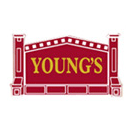Submitted by aarAdmin on Tue, 06/25/2024 - 00:00
Two inescapable conclusions are apparent from the results of Melbourne-based Leski Auctions latest two-day decorative arts and collectables sale on June 22 and 23.
One – the personal collections of well-known collectors are popular with buyers, with almost all items selling within or above catalogue estimate range.
Two – it can be difficult at times to set realistic estimates for items imported from other countries.
It is of little surprise that the possessions of well-known collectors will be snapped up by others keen to build on their own collections.
So it was for the 100 items in David Vinall’s hoard – particularly his antique clocks, watches and chronometers – most of which successfully went under the hammer.
The South Australian-born collector, who died last year, had a family history inextricably linked to the state’s historic Albion Farm, part of an 1842 land grant.
Undoubtedly, he inherited his collecting passion from his father Laurie who amassed a nationally significant array of veteran cars – including an 1898 Mercedes Benz that eventually became the first ever registered Victorian vehicle.
Born in 1943, David initially turned his attention to heritage preservation, which included the Adelaide historic treasure Edmund Wright House, before concentrating on clocks and watches, most of which were sourced from Australian and English specialist dealers.
The highest price paid at the Leski Auction was for his William and Mary spring table clock (lot 223) by famed clockmaker Samuel Towson (born 1672 and active from 1700-1738) which sold for $36,000.
Two of David’s 19th century chronometers (lots 217 and 218) by English and Scottish makers brought more than their catalogue estimates – the first more than double at $7000 and the second a $3000 exchange.
A 19th century English skeleton (lot 221) sold for $4000 (double its estimate) and an antique English regulator (lot 222) for $6500 – well within its estimate range – while a rare circa 1840 Makura Dokei Japanese travelling spring table clock (lot 224), originally from the John Read Collection of Fine Antique Japanese Timekeepers, was another fine result at $3200.
However, the real auction surprise was for a set of four 19th century Chinese porcelain panels featuring figures in a landscape (lot 1133) that sold for $28,000 against a $400-$600 catalogue estimate – astounding auction goers and Leski Auctions staff.
The panels were attributed to the famous ceramic movement Qianjlang Ware of the late Qing Dynasty (1644-1912), China’s largest imperial dynasty and by 1790 the world’s fourth-largest empire.
Several other items in the Chinese and Asian art section also were a bonus for vendors including a19th/20th century circular porcelain panel (lot 1137) that changed hands for $7000 on a $300-$500 estimate and two 18th/19th century Indian cast bronze statues (lot 1150) that for $3000, more than 10 times their low estimate.
Another high but anticipated result was for the circa 1968 painting The Road to Jerusalem (lot 795) by Romanian, Israeli artist Reuven Rubin (1893-1974) which sold at the top of its $20,000-$30,000 estimate.
Several music instruments also outstripped their low estimates including an antique violin bearing the paper label Vuillaume (lot 1500) that changed hands for $3400 on $100-$200 estimate, a 19th/20th century triola (lot 1502) - $4200 on a $200-$300 estimation – and a Tanzibar accordian (lot 1515) that brought $3000 – 10 times its upper catalogue figure.










